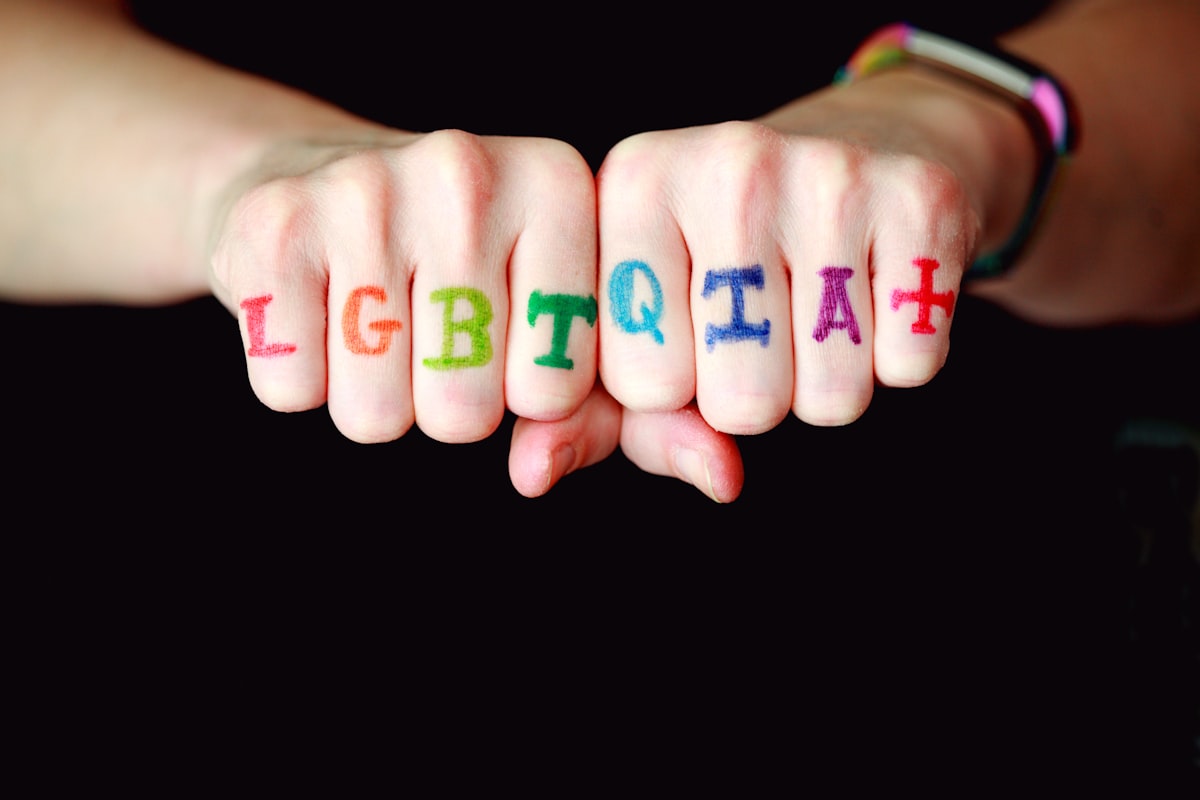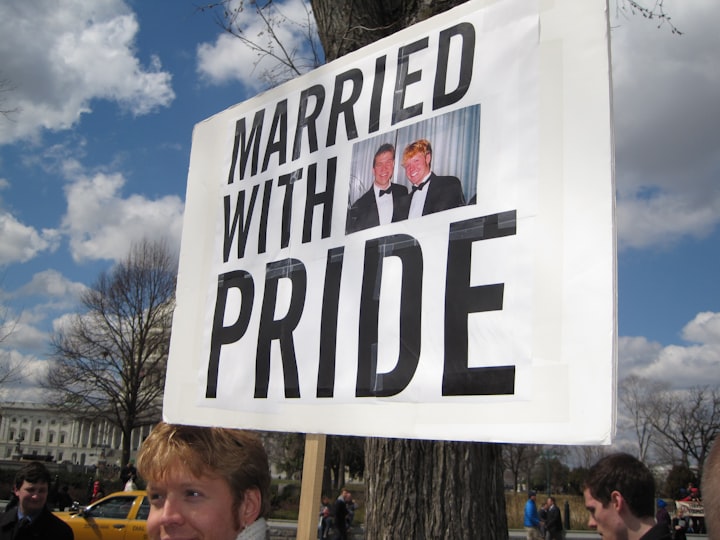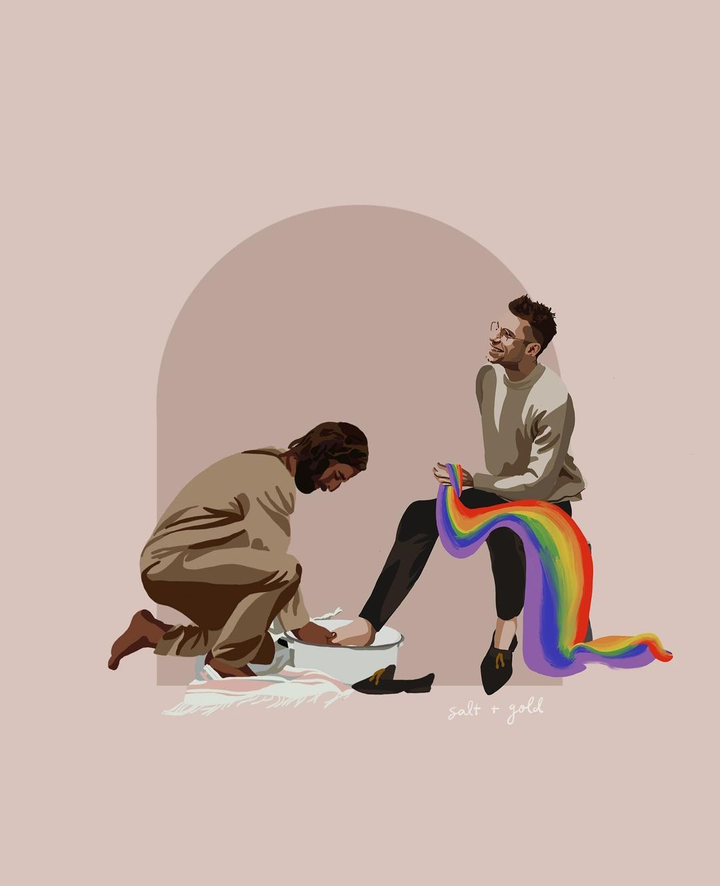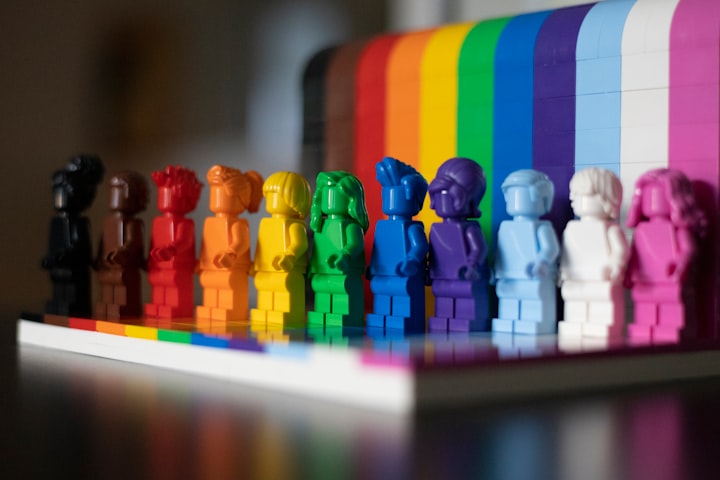The Christian Response to Homosexuality – Part 1
To understand we ought to know. Oftentimes, we don’t know the ABC of LGBT but have arrived at conclusions and are busy giving recommendations. There is a huge knowledge gap that we could be guilty of if we haven’t done the first thing in learning about this issue.

This is a guest article by Charles Premkumar Joseph
Bridging the knowledge gap!
I vividly remember that at the wake of the Article 377 ruling by the Indian Supreme Court, public reactions to the verdict ranged from elation to disgust, depending on where you are looking. From Dr. Sashi Taroor’s vehement ‘the government has no place in our bedrooms’ to Dr.Subramaniam Swamy’s naive, 'medical research must be done to rectify homosexuality'’, opinions on the matter were soaring sky high.
In the midst of varied reactions and responses coming from all quarters, there is a huge need for us as responsible Christians to understand the nuances connected with the LGBTQ issue and respond to the community sensitively and sensibly without belittling the wisdom of our Maker. While Christians are passionate in being Scriptural, the need for sensitivity and sensibility in the articulation of truth seasoned with grace is indeed pivotal in advancing the truth. This article is an initial attempt towards that end.
Complex
The issue at hand is undoubtedly a complex one. It’s not just a moral one as most Christians see it. It has emotional, biochemical, psychological and sociological complexities built into it, that one has to recognize and attempt to understand before simplistically rushing into the hamartiological and soteriological ramifications. In the 70s the acronym LGB was popularly used for this community, in the 80s it evolved after considerable resistance to include the ‘T’ and became LGBT, in the 90s it grew up to LGBTQ and then rapidly to LGBTQ+2. More recently, QUILTBAG (Queer/Questioning, Undecided, Intersex, Lesbian, Trans, Bisexual Asexual/Allied and Gay/Genderqueer) and LGBTQQIP2SAA (lesbian, gay, bisexual, transgender, queer, questioning, intersex, pansexual, 2-spirited, asexual and allies) are the more agreed acronyms, although it keeps expanding ever now and then. So here we are dealing with a community of people who claim their sexualities to be so diverse; ever expanding to include every conceivable variation (each group lobbying for its inclusion/representation) from the binary, male and female. A more practical label to refer to this community therefore would be GSM (Gender and Sexual Minorities) or DSG (Diverse Sexualities and Genders) which is an umbrella term that is used in some literature in this context. However, not all within are agreed on these nomenclature and are even offended if their sexuality doesn’t get represented. So there’s more to it than what meets the eye, speaking of the diversity in presentations and the disagreements or discontentment across the board, even within.

The Approach
Goethe is famous to have said, “Everyone hears only what he understands”. This couldn’t be truer as we attempt to respond to the issue of homosexuality. Understanding has always been a rare virtue. The Bible has a lot to teach us on the virtue of understanding. If we are to help someone from this community, the primary thing to work towards seems to be to try and understand the issue at hand - "The simple takes no pleasure in understanding, but only in airing his opinion" (Proverbs 18:2).
To understand we ought to know. Oftentimes, we don’t know the ABC of LGBT but have arrived at conclusions and are busy giving recommendations. There is a huge knowledge gap that we could be guilty of if we haven’t done the first thing in learning about this issue. Knowledge therefore is the precursor or the basic building block to understanding, which paves way to wisdom (application) in recommendations or help that we might want to offer those in need from this community.
The approach therefore has to be tri-layered;
- Knowledge – Knowing
- Understanding - Growing and
- Wisdom - Applying
To understand we ought to know. Oftentimes, we don’t know the ABC of LGBT but have arrived at conclusions and are busy giving recommendations.
1. Knowing
For a Christian on all matter of dogma and praxis, the Scriptures (Bible) are the foundation and basis. While we sift the Scriptures to look for references to ‘homosexuality’ we would be surprised to find just six references in all, three in the Old Testament and three in the New Testament. I’m in no way suggesting that this is inadequate data to establish that homosexuality is not God’s prescribed design for human sexuality. However, if we are speaking to someone from the LGBTQ community, who doesn’t believe in the authority of the Bible to start with, leave alone believe in the God of the Bible as the One True God, or worse still doesn’t even buy into the notion of God, we would be running in circles. I don’t discount the power of God to use his word to convince and convict people, that sure does happen, but the timing of introducing these in conversations is very crucial.
There are 7 main Scriptural passages that explicitly speak against homosexual practices;
- Genesis 19 (Jude 1:7)
- Leviticus 18
- Leviticus 20
- 1 Corinthians 6
- 1 Timothy 1
- Romans 1
However, resorting to only scriptures would not be normative in reaching out to this community. Knowing the truth doesn’t mean we learn only Biblical arguments. Especially if it involves friends of other faith persuasions, an effective strategy would also incorporate ‘secular’ arguments. This includes appeals to natural law, the common good and public health. If we can base our views on evidence that make sense even to nonreligious people, we’ll be able to speak with anyone. So constructing an apology from common grounds (science) as against scriptures alone could prove to be more winsome and effective.
The ABC’s of LGBTQIA+
Without getting technical, here are some easy to understand working definitions that are important for us know, as a precursor to our attempt to understand. All these definitions are adapted from the American Psychological Association (APA).
Sex
Sex is that which is assigned at birth. It refers to one’s biological status - male or female. It is associated primarily with physical attributes; Chromosomes, Hormone prevalence, External/Internal Anatomy.
Gender
Gender is not the same as sex! The socially constructed roles, behaviours, activities, and attributes that a given society considers appropriate for boys and men or girls and women. These influence the ways that people act, interact, and feel about themselves.
While aspects of biological sex are similar across different cultures, aspects of gender may differ.

Sexuality (Sexual Orientation)
Sexuality or Sexual Orientation refers to an individual’s enduring physical, romantic and/or emotional attraction to another person.
The ‘LGB’ part of the acronym LGBT refers one’s sexual orientation. Lesbian (women sexually attracted to women), Gay (men attracted to men) and Bisexual (both same-sex and opposite sex attractions in the same individual)
Gender Identity
Gender identity is one’s internal sense of being male, female or something else. The ‘T’ which denotes Transgender in LGBT acronym.
Transgender (Gender non-conforming)
Transgender is an umbrella term for people whose gender identity or gender expression does not conform to that typically associated with the sex to which they were assigned at birth.
In terms of their sexual orientation, transgender people may be Straight, Lesbian, Gay, Bisexual or even Asexual, just as non-transgender people could be. Transgender people usually label their sexual orientation using their gender as a reference. For example, a transgender man, or a person who is assigned female at birth and transitions to male, who is attracted to other men would be identified as a gay man.
LGB Vs. T – Know the difference!
The answer to the questions “Who I want to go to bed with?” Vs. “Who I want to go to bed as?” helps us understand that ‘LGB’ describes sexual orientation as against ‘T’ that describes gender identity.
Transgender is a group that needs loads of help with. Their struggle is identity and confusion, not sexual proclivity or preference (sexuality). Sadly, 41 percent of transgender people attempt suicide compared to 1.6 percent of the general population.1
Eunuchs
‘Eunuch’ is an archaic word that’s used very loosely in the modern context. When Jesus speaks of ‘some made that way, some born that way’ in Matt 19:12, he’s speaking about celibacy and contextually it translates as a reference to people that are ‘frigid’ and a closer modern descriptor would be someone that is asexual. However today we use it refer to the gender-non conforming (transgender) people.
Jewish commentators speak of at least 4 terms in the Talmud: saris [Hebrew for “eunuch”], aylonith, andogynos, and tumtum. Church Fathers, such as Augustine, recognize eunuchs and also testify to the language and legal status of Androgynes.2
If some people are “born that way” like Jesus says, we need to understand that genetic aberrations and anomalies were clearly not part of God’s original creative plan, where he made them fearfully and wonderfully in his image and likeness as man and woman – imago dei and pronounced his creation on day six as “very good”. Things got distorted and went spiralling down as a result of humankind’s mistrust of their Maker. We fell from being the crowning glory of God’s creation; we fell from favour and our relationship with God. Theologians rightly call this, ‘the fall’. So distortions of every kind including genetic abnormalities find their roots in the fall.
For those that bear the consequence of the fall (to a larger extent than others) in their bodies - asexual and inter-sexed (which we’ll look at in a moment) – things seem ‘unfair’. This is the same way that people that are genetically disadvantaged with various other disorders feel and rightly so.
While we have a reason to cry foul, we clearly cannot give God the red card for our foul. It’s our doing against ourselves. But God does take the card and pays for our penalty against him, with his own son!
For the sexually disadvantaged (asexual) the Scriptures have a comfort and justice.
In Isaiah 56:3-5, God says;
“Let not the foreigner who has joined himself to the LORD say, ‘The LORD will surely separate me from his people’; and let not the eunuch say, ‘Behold, I am a dry tree.’
For thus says the LORD: ‘To the eunuchs who keep my Sabbaths, who choose the things that please me and hold fast my covenant, I will give in my house and within my walls a monument and a name better than sons and daughters; I will give them an everlasting name that shall not be cut off.’”
While that acknowledges a genetic sexual abnormality (as a consequence of human fall), God compassionately urges them to be steadfast in their devotion to him, to ultimately honour them to a position with a reward that’s greater than sons and daughters. This demonstrates that he’s a God that recompenses us by putting himself on the spot, if only we trust him this time around, unlike our first parents in the Garden.
Intersex
Intersex is a congenital, biological condition where an individual has ambiguous or indeterminate genitalia, or where there is a discord between a person’s chromosomes and bodily gender. Along with the eunuchs (asexual), the inter-sexed are the only population that could say “I’m born this way.” Most intersex babies are surgically treated in infancy and the ambiguous and underdeveloped genitalia is repaired with parental consent, and with proper affirmation, reinforcement and care they can live and function as normal males and females. However the ‘sexual revolution’ movement in assuming to be helpful is perhaps causing more confusion and damage to their own in the long run.
Like someone that has a genetic disorder, example, Muscular dystrophy, who recognizes the challenge and resorts to restorative, remedial or rehabilitators medical measures, which is common and mainstream practice, the same approach seldom is seen, encouraged or celebrated when it comes to genetic sexual anomalies! It’s hard to ignore the divergent approaches/mind-sets employed in looking at how disorders that are primarily genetic are engaged with in diabolically different ways.
While it would be grievous to undermine the emotional, social, relational and physical challenges of this specific population (intersex), what is perhaps more damaging is denying and curtailing the objective and remedial/reparative medical help that can make a world of difference and help them live fulfilled lives that are closer to what their biology objectively and predominantly indicates.
Hijras
This is a loose South Asian term umbrella that is indiscriminately used to mean any or all including ‘eunuchs’, intersex and transgender people.
Fluidity
This is another concept that’s gaining a lot of weight in the sexuality and identity discourse. Proponents argue that sexuality and identity are not static and fixed but are dynamic and fluid, freely flowing from one to another. In terms of sexual attraction it is argued that one could move from hetero to homo to bi-sexual and back. It’s also argued that this can happen with one’s sense of identity, moving from male to female to gender non-conforming and back.
In the ensuing part we’ll graduate to the next levels of ‘understanding’ and ‘applying’ (wisdom) the knowledge gained to this contemporary cultural issue that’s at our doorsteps, now!
Endnotes:
- Su, Dejun; Irwin, Jay A.; Fisher, Christopher; Ramos, Athena; Kelley, Megan; Rogel Mendoza, Diana Ariss; and Coleman, Jason D., "Mental Health Disparities Within the LGBT Population: A Comparison Between Transgender and Non-transgender Individuals" (2016). Nutrition and Health Sciences -- Faculty Publications. 117. https://digitalcommons.unl.edu/nutritionfacpub/117
- John Hare, “Hermaphrodites, Eunuchs, and Intersex People: The Witness of Medical Science in Biblical Times and Today,” in Intersex, Theology and the Bible: Troubling Bodies in Church, Text, and Society, Palgrave, 2015
Charles Premkumar Joseph earned a post-professional masters in cardiopulmonary physical therapy from the Christian Medical College and Hospital in Vellore, India, where he then served as clinician, lecturer, and researcher. Curious to explore and understand mind-body interactions, he went on to complete a masters in psychology as well. His passion for rehabilitating the soul in addition to the body and mind led him to join RZIM as a writer and itinerant speaker. Motivated by a desire to understand the spirit/soul aspects of personhood, he pursues a Master's in Christian Apologetics from Talbot School of Theology at Biola University. Charles hopes to someday pursue doctoral studies integrating all of his body-mind-spirit learnings. He currently leads Think Christ Apologetics.





Comments ()